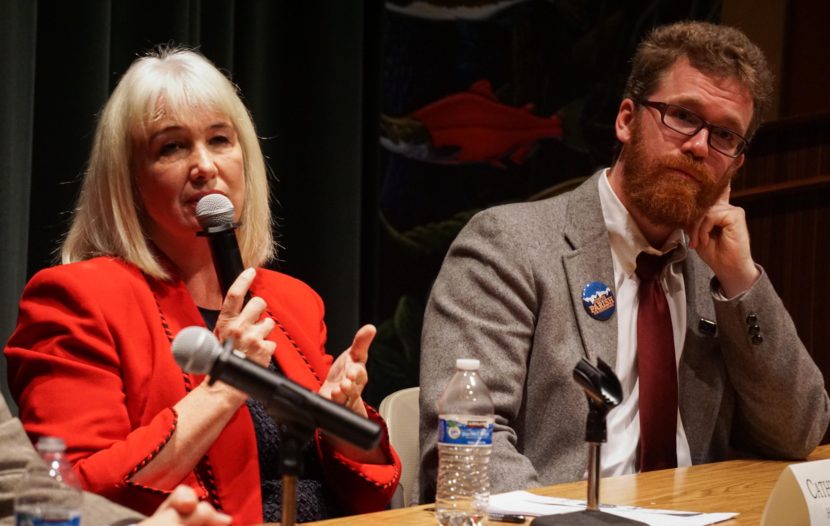
When voters head to the polls on Nov. 8, they’ll decide who’s going to represent them in the state House and Senate. That will trigger the backroom talks that determine who will form the majority caucuses – and the legislature’s future direction.
After the election, one thing is for certain. The legislature that voters send to Juneau in January will be very different than the one that left in July. Four senators didn’t run for re-election. And at least a quarter of the House will be replaced.
The question is how far the anti-incumbent mood will extend in the general election. More losses in the current House majority could increase the chance of a new bipartisan coalition in that chamber.
Homer Republican Rep. Paul Seaton said he’d like to see a majority in which party labels don’t matter – only a willingness to work on a fiscal plan that includes both cuts in government spending and new sources of state revenue.
“Hopefully, what we’ll get is a grouping of people that all want to solve the problem, that agree that moving forward with a sustainable fiscal plan is the most important thing that we have to do,” Seaton said.
Republicans have led the majority for more than 20 years, with Mike Chenault of Nikiski serving as speaker for the last eight years. The current House majority includes 22 Republicans and four Democrats, while 12 Democrats and an independent are in the minority. Republican Lora Reinbold isn’t in a caucus.
A new bipartisan caucus and who should lead it came up in a recent debate for the House race in Juneau.

Republican Rep. Cathy Muñoz said she’s open to serving in a Republican-led majority, or in a new bipartisan coalition.
“I’m going to join the majority caucus that best represents Juneau, whether it’s a coalition government, whether it’s Republican led,” she said.
Muñoz also revealed her thoughts on potential candidates to lead the House as speaker, saying that either Republican Steve Thompson of Fairbanks or Democrat Bryce Edgmon of Dilligham would be a good speaker.
Both Thompson and Edgmon, have challengers – Democrat Truno Holdaway faces Thompson, while Republican William Weatherby faces Edgmon.
Edgmon agreed that the new majority should be focused on a sustainable fiscal plan – even if it has to take some positions that are unpopular. He said it’s important to sustain government services that serve his rural constituents.
“Quite frankly, I’m flattered that my name would be in consideration for speaker of the House,” Edgmon said. “I’ve had a number of people bring that to my attention. I’ve not been out seeking it.”
Muñoz’s opponent, Democrat Justin Parish, said a new bipartisan coalition would serve Juneau well. He’d like current Democratic leader Chris Tuck or Paul Seaton to be speaker.
“I’m really happy to work with whoever manages to stand on the writhing pile of bodies,” Parish said.
Tuck said it’s premature to say who would be the speaker, but he’s hopeful that he and other Democrats will be a part of the majority caucus next year. He noted that the successful primary challenges of two rural Democrats who defeated incumbents in the current majority have strengthened the Democrats.
“I wouldn’t be surprised if you still have a Democrat at the top,” he said. “Because right now, with the two elections that happened in rural Alaska with Dean Westlake and Zach Fansler winning, that makes 16 Democrats and one independent there. And all we would need is four more Republicans. So would we give up that leadership to get a coalition going? Possibly.”
There’s much less of a chance of a new bipartisan majority in the Senate. That’s because the current majority that includes 16 of the 20 senators is more insulated from losses in a year with only a few highly competitive Senate races.
Andrew Kitchenman is the state government and politics reporter for Alaska Public Media and KTOO in Juneau. Reach him at akitchenman@alaskapublic.org.




